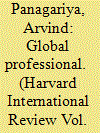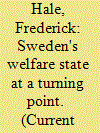|
|
|
Sort Order |
|
|
|
Items / Page
|
|
|
|
|
|
|
| Srl | Item |
| 1 |
ID:
159032


|
|
|
|
|
| Summary/Abstract |
Following the general trend in demographic change, and enhanced by the large-scale and continuous rural-urban migration, the rural labor force remaining in farming is quickly reducing and aging. This is likely to have significant impact on the labor-intensive agriculture. However, the fast growing of machinery service has provided farmers an opportunity to out-source field work that demands heavy labor inputs. Therefore, the demographic change and development of machinery service may jointly influence farmers' production decision in terms of crop choice and inputs. Household data of Fixed Point Rural Survey (FPRS) are used to examine the potential change in farmers' decisions on crop mix and input uses. It is found out that, under current situations, aging may impact agriculture through changing crop mix, and the choice is largely determined by access to service of farm machine; which, in turn, is likely to be determined by topography.
|
|
|
|
|
|
|
|
|
|
|
|
|
|
|
|
| 2 |
ID:
096376


|
|
|
|
|
| Publication |
2010.
|
| Summary/Abstract |
The United States population is changing in significant ways: it is growing larger, older, and more racially and ethnically diverse, and these changes are regionally concentrated. How will these changes affect the future of Congress? In this article, I show that demographic change has significant implications for the quality of representation, the legislative agenda, party coalitions, and the diversity of congressional membership in the future, even as change inside Congress will proceed more slowly than change outside it.
|
|
|
|
|
|
|
|
|
|
|
|
|
|
|
|
| 3 |
ID:
131950


|
|
|
|
|
| Publication |
2014.
|
| Summary/Abstract |
In a novel approach to studying political mobilization among ethnic Tibetans in China, this article addresses two key questions. First, considering the Chinese state's repressive policies towards Tibetan Buddhism, what role does religion play in fomenting Tibetan political resistance? Second, what implications can be drawn from the changing ethnic demography in Tibet about the conflict behaviour of Tibetans? Using various GIS-referenced data, this article specifically examines the 2008 Tibetan protest movements in China. The main results of our analysis indicate that the spread and frequency of protests in ethnic Tibetan areas are significantly associated with the number of officially registered Tibetan Buddhist sites, as well as the historical dominance of particular types of Tibetan religious sects. Furthermore, our analysis shows that the effect of Han Chinese settlement on Tibetan political activism is more controversial than previously though
|
|
|
|
|
|
|
|
|
|
|
|
|
|
|
|
| 4 |
ID:
105590


|
|
|
| 5 |
ID:
116523


|
|
|
|
|
| Publication |
2012.
|
| Summary/Abstract |
Most existing studies of food demand focus on economic factors, such as income and price. Physical factors which determine human energy intake requirement, given economic conditions, such as gender and age structures of the population as well as occupation, are usually not incorporated. While this is appropriate in the situation of a continuous, stable development of demographic structure, it might lead to biased result if drastic and irregular demographic changes have taken place. This paper provides a case study of China of the impact of demographic dynamics on the change of physical requirement and energy intake demand. The unique population pyramid in China, resulted from the big famine in the early 1960s and then the "One Child" policy" starting from the 1980s, has led to the irregular evolution of age groups and the consequent changes in the proportion of the "big-eaters". As a result, given food price and income, the very age structure of the population at the time affects the overall weighted energy intake level of the population significantly. Using household survey data ranging from year 1991 to 2009, the index of Adult Male Equivalent Scale (AMES) is constructed to reflect the varying per capita physical requirement resulted from the demographic dynamic over the years in China. The AMES index, together with food price and income, has been applied to the per capita energy intake model. The empirical results show that the AMES index has statically strong impact on per capita energy intake, and the inclusion of the AMES index into the model has improved the model fitness. This finding sheds light on a possible way for improvement in projecting China's food demand in the future by incorporating the country's changing demographic factors.
|
|
|
|
|
|
|
|
|
|
|
|
|
|
|
|
| 6 |
ID:
186967


|
|
|
|
|
| Summary/Abstract |
This article examines the role of siege warfare and population control in the coercive counterinsurgency strategy used by the Syrian regime of Bashar al-Assad to effectively crush the revolution that began in 2011. We extend the coercive counterinsurgency framework offered by Monica Duffy Toft and Yuri Zhukov to analyze the Syrian regime’s use of the twin tactical pillars of siege warfare and population control. We focus on how these two types of denial – military and political – proved essential to the regime’s military victory.
|
|
|
|
|
|
|
|
|
|
|
|
|
|
|
|
| 7 |
ID:
110967


|
|
|
|
|
| Publication |
2012.
|
| Summary/Abstract |
What concerns social scientists, of course, is the question of who will support an aging population legally entitled to lifelong social security.
|
|
|
|
|
|
|
|
|
|
|
|
|
|
|
|
| 8 |
ID:
185605


|
|
|
|
|
| Summary/Abstract |
Why do communities with larger shares of ethnic and racial minorities have worse public goods provision? Many studies have emphasized the role of diversity in hindering public outcomes, but the question of causality remains elusive. The authors contribute to this debate by tracing the roots of both contemporary racial demography and public goods provision to the uneven historical expansion of the state. Focusing on new historical data from Brazil, the authors show that more remote municipalities with lower levels of state capacity in the past were more frequently selected by escaped slaves to serve as permanent settlements. Consequently, such municipalities have worse public services and larger shares of Afro-descendants today. These results highlight the pervasive endogeneity of the relationship between ethnic demography and public outcomes. The failure to account for context-dependent historical confounders raises concerns about the validity of previous findings regarding the social costs and benefits of any particular demographic composition.
|
|
|
|
|
|
|
|
|
|
|
|
|
|
|
|
|
|
|
|
|